Privileged test ride on the ultimate example of the world’s first Superbike
To be invited to ride a historic and unrestored 66-year old motorcycle, that’s almost certainly the last 100% original example of the most desirable series production model ever made, by any manufacturer, is an act of generosity as well as implied trust on the part of its owner Nicolas Dourassoff that it was important to repay by bringing it back in one piece. For the ex-Jack Ehret 1951 Vincent Black Lightning is living history on two wheels, with just 8,682 kilometres from new on its 300 kph Smiths clock, almost every one of them in anger.
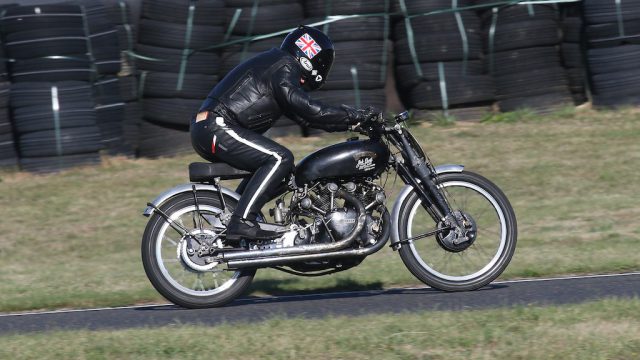
These now include my two dozen laps at the Carole race circuit on the outskirts of Paris, to which Nicolas brought the battle-scarred warrior that had been recommissioned for use by Patrick Godet for me to ride on a regular sunny afternoon track day. However, so that I could properly sample how a Black Lightning should perform without paying due deference to the bike’s age, Godet also brought along a recently built 100% authentic Black Lightning Replica which he’d created for another of his customers, Englishman Peter Fox.
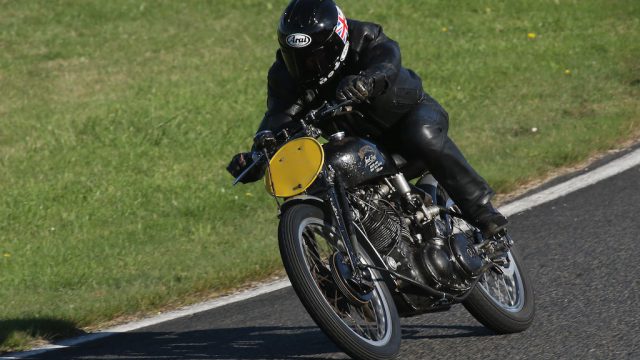
Peter had already covered 1200 street miles on it, pronouncing it “huge fun, and incredibly impressive once you get it revving, when it feels like you’re being pulled along by a huge bungee cord!”
Other stories for you: Tips for going off-road on a big adventure bike
DUCATI DESMOSEDICI RR: Racer With Lights
Thanks, Peter – I couldn’t put it better myself, for that is indeed the impression you get on the Ehret Vincent once you see its Smiths Chronometric rev-counter’s needle track its way with traditionally jerkiness to the 3,800 rpm mark, whereupon the bungee cord releases and you’re swept to what must have been unthought of speed by mid-20th century standards. Nothing much happens below those revs, though, so you have to coax the engine into meaningful action with a dab on the Ferodo clutch’s light-action lever. But from that access point to its inbuilt poke onwards, the paragon of performance that all the Black Lightning’s records and race victories proclaim it to be, makes itself apparent. In no time at all the revcounter’s showing the 6,000 rpm mark, at which point you must stab the extended gearlever downwards with your right foot to hit a higher ratio of the four available. There are such massive amounts of torque even by today’s standards that the Vincent just lunges forward in the next higher gear when you get back on the throttle again, noting as you do so that its action seems unaccountably smooth, considering how worn the self-evidently ancient cables sprouting from the right handlebar and leading to the twin Amal 10TT9 carbs, appear to be.
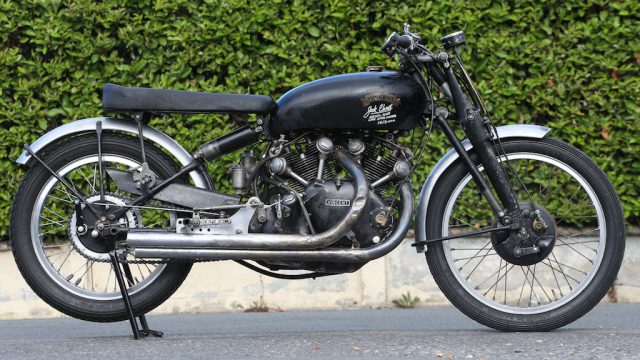
That’s because, in recommissioning this retroracer for track action in accordance with Nicolas Dourassoff’s belief that historic bikes should be seen and heard in action, not stuck in a garage on permanent static display, Patrick Godet has been at pans not to destroy the truth of time. “Once Nicolas decided to preserve the bike in its current state, and not ask me to restore it – which was 1,000% the right decision – I wanted to make sure that all the new parts I fitted were as least obvious as possible,” he says. “But to make it safe to be ridden took quite a lot of work, because the engine parts were very worn, and the crankshaft had been repaired in a funny way. So we stripped the bike totally, and rebuilt it using the original spec parts we have manufactured using the original Black Lightning drawings that we’ve obtained. But they’re all inside where you can’t see them, so while the throttle and brake cables may look old, all the internal wires are brand new, to give a smooth action. We’ve also converted it to running it on petrol rather than methanol, since of course we now have much better fuel available today than they did back then.”
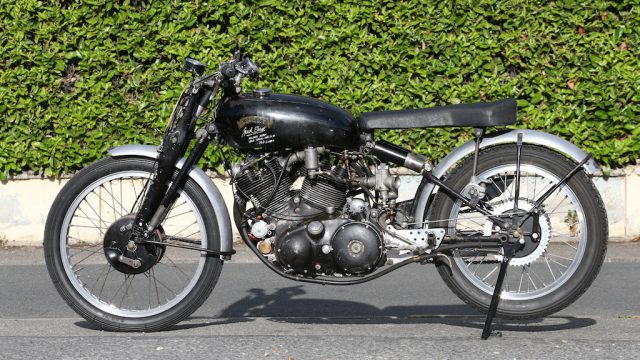
However, even though the crankcases were quite worn, they’re still the original ones with the main bearings resleeved, rather than Godet’s modern magnesium copies which he’s used on Peter Fox’s Replica. He has however fitted new pistons, liners, valves, dual valve springs, Mark II Vincent cams, cam followers and oil pump to the Ehret bike’s V-twin motor, while retaining all the original parts which these have replaced for Dourassoff to hold on to. The same thing applies for the original 20-inch rear wheel which has been replaced on the bike by a 19-incher, on the grounds that 20-inch racing tyres are no longer available. Now shod with rear Avon GP rubber matched to a front 21-inch ribbed Avon Racing cover, the Ehret Vincent tracked well through Carole’s mickey-mouse infield section, with good grip delivered exiting either of its pair of hairpin bends, which on most racebikes ask for bottom gear. Not on the Lightnings, though, thanks to their reserves of torque and the way they break into a gallop very quickly in second gear once you’ve straightened up, just by fingering the clutch lever lightly to send the surprisingly responsive engine’s revs soaring to the sound of thunder from the straight exhausts, whose stirring hard-edged note denotes heaps of valve overlap.
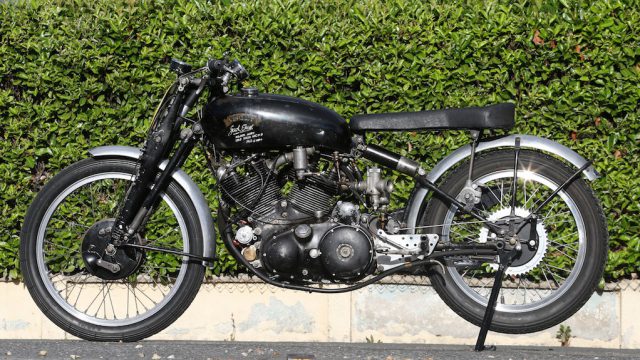
When that happens you find yourself thundering past the R6 Yamahas and 600 Hondas that have out-manoeuvred you in the infield section, only to let them fly past you once again when you anchor up miles earlier for the next hairpin – just as they’re probably about to hit top gear! The brakes on the Vincent are easily the worst thing about riding it, and you need heaps of respect for your braking markers, because basically there’s absolutely nothing held in reserve – instead, what never works very well to begin with gets progressively worse as the pair of tiny seven-inch/178mm single leading-shoe drum brakes fitted at each end (the extra one at the rear for Ehret’s sidecar use) fade massively. These incidentally carry brand-new Godet replica aluminium brake plates rather than the original Lightning magnesium items, since these are too fragile to be safe, and Patrick is still working on producing magnesium replicas. I doubt they’ll work any better than these ones do when they come along, though – and the ones on the Fox Replica are just as bad! Probably no single aspect of two-wheeled engineering has improved so much in the past 66 years as brakes, and for a 150 mph motorcycle the Vincent’s stoppers are definitely on the weak side. Plan ahead! The fact that the Black Lightning didn’t stop very well was probably not conceived by the factory as being an issue, inasmuch as other much slower bikes weren’t any better than a motorcycle primarily designed to go fast in a straight line. Still, the Lightning won three Isle of Man TT races, as well as many short circuit races around the world, where presumably its massive engine performance coupled with rear suspension that was streets better than anything else on two wheels back then, more than made up for the braking issue.

Its focus on straight-line performance is also perhaps one reason that the Black Lightning’s gearchange is so awkward, so that thanks to the straight exhausts running under the right footrest, it’s very hard to get your foot under the lever in order to change down for a corner. Patrick Godet has fitted a sort of extension sleeve to the hollow foot lever which helps a little, but it means you have to take your foot off the rest to grope around under the lever to hoick it upwards in order to shift down under braking – a necessary assistance to those poor stoppers. The problem is certainly caused by modern riding boots being much more robust and protective than the soft, thin ones used Back Then, making the space left by Vincent between the pipes and the footpeg insufficient today, and the same problem occurs on the Fox Replica ith an identical exhaust system. “I often set off from a traffic light or stop sign in second gear,” says Peter Fox. “There’s so much torque you can do that, without slipping the clutch too badly.”
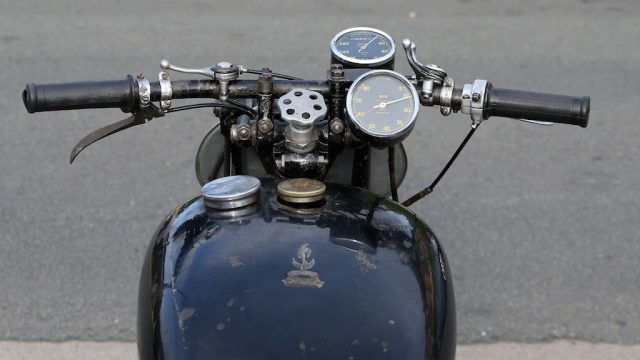
Riding Peter’s Replica alongside the Ehret artefact at Carole allowed me to give the Black Lightning’s handling a good cross-examination, and I was genuinely impressed how light and precise the steering was, and how much turn speed I could keep up even with the skinny 21-inch front tyre fitted. I remember testing Patrick Godet’s Vincent Speciale, the 1000cc Lightning-ised racebike he brought over to Britain in the mid-’80s, on which ex-GP rider Hubert Rigal defeated the cream of British Manx Norton riders to win the Vintage Race of the Year at the tight Brands Hatch short circuit – not a Vincent track, you might think! – and again at Snetterton. As an ex-Vincent owner who’d been distinctly unimpressed by the handling of my Series C Rapide, I was amazed back then at how well the Godet Vincent steered, and the same thing is true today of the Lightning Replica, which moreover displayed no trace of the dreaded shimmy the Girdraulic forks will expose you to if the links are the slightest bit worn. I can’t say I rode the Ehret bike hard enough to find out if it did that, but the Replica was very confidence inspiring in turns, as well as gloriously torquey and fast once you get the revs dialled up above that 3,800 rpm power threshold.

“The Lightning is not a bike designed for race circuit use,” says Patrick Godet. “If you want to do road racing you must make an exhaust which goes underneath the engine so you can have a proper gear lever, because with the two straight pipes it is not nice for the rider. If you look at pictures of Black Lightnings being road raced they always have the gear lever raised higher, which is just as bad and is why we are extending the lever. I have never quite understood the way they were doing that, but it has so much more performance that you don’t need to change many gears – it goes in every gear!”
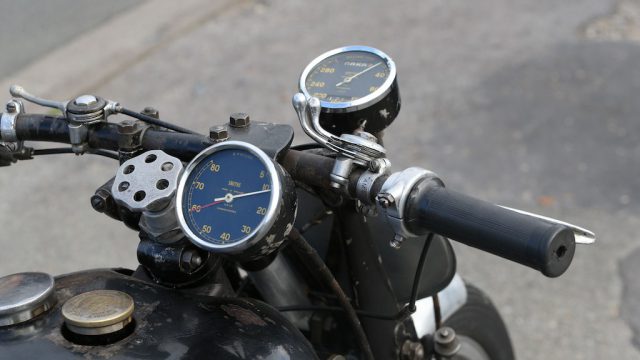
I’ll say. Throw a leg over the seat, and you discover the Vincent is low and narrow beneath you – it feels much smaller than a 150 mph bike of the Fab Fifties has any right to. The one-piece handlebar is quite narrow and flat, but with upturned ends which deliver a comfortable leaned-forward mile-eating stance, while still giving good leverage in the tight turns that proliferate at Carole. The Vincent’s low-speed handling is slightly ponderous, though, with the distinctive Girdraulic wishbone forks’ pressed-aluminium girder blades describing a lazy arc as you lean into a turn, feeling all the while they’re about to fold in on themselves. But this never happens, of course, and instead the handling becomes more assured as you up the pace, with greater precision in steering than the relatively primitive telescopic forks of the day. No wonder John Britten and Claude Fior, two farsighted modern day technical gurus who are both sadly no longer with us, developed alternative versions of the Vincent blade forks three decades later for their exercises in alternative two-wheeled thinking. By the standards of the day the Vincent’s ride quality was excellent, too, the cantilever rear suspension with a single hydraulic damper and twin spring boxes under the saddle eating up the few bumps on the Carole circuit.
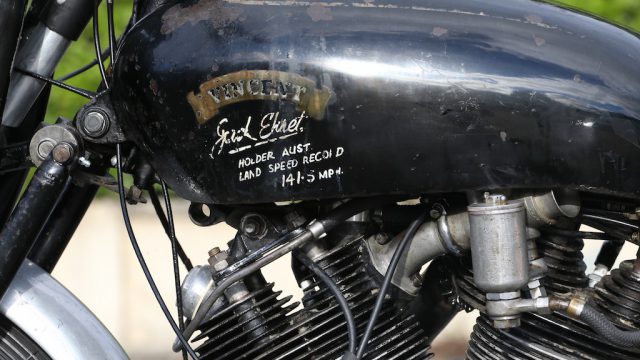
But it’s that torquey, great-sounding 84 x 90 mm 998cc V-twin engine that’s the real star of the show in the Back Lightning. Producing 70 bhp at 5,600 rpm, it makes every one of those horses count, delivering a level of performance that, while more than satisfactory today must have been truly mind-blowing by the standards of Back Then. Acceleration is forceful above the 3,800 rpm threshold, and with the crack of the straight exhaust pipes echoing in your ear, it’s a real thrill to wind open the light-action throttle, and feel the wind on your helmet intensify as the needle cranks round that speedo parked in front of the revcounter. Phil Irving’s masterpiece motor delivers a level of performance that nothing else could live with on ‘50s roads – or tracks.
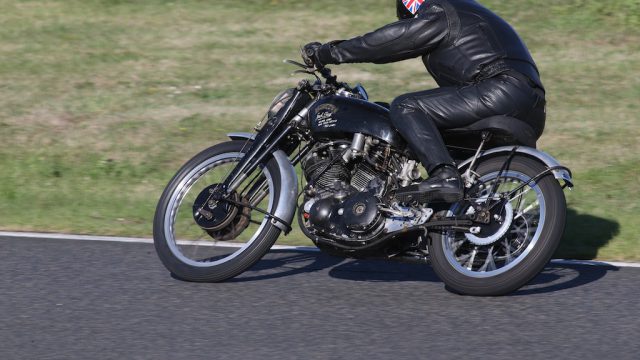
Nicolas Dourassoff’s ex-Jack Ehret Vincent Black Lightning is not just an ultra-desirable collector’s item, but provides an entirely faithful window on the refined but still raw-edged level of performance which Philip Vincent’s motorcycles delivered over sixty years ago. How wonderful that its new owner rides and enjoys it, rather than wrapping it up indoors as the mechanical objet d’art it undoubtedly is. Meanwhile – I wonder where my Rapide ended up?!
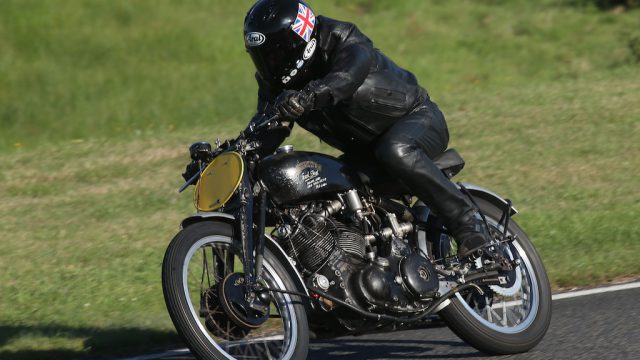
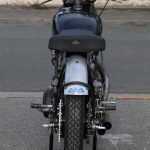
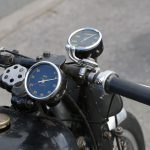
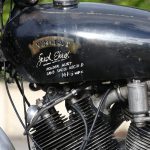
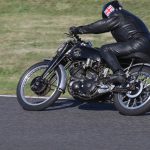
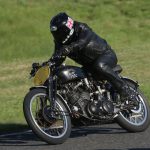
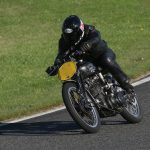
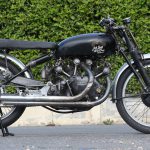
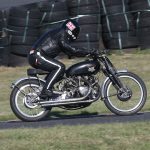
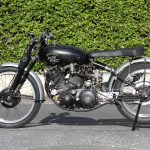
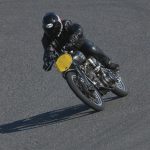
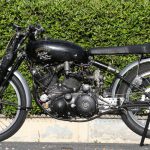
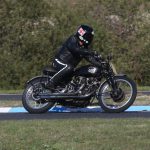
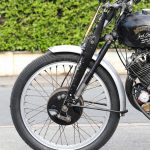
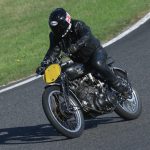
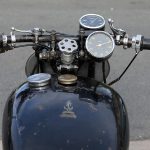
I recently had the pleasure of meeting Alan while he was testing a Yamaha TX750 from the collection of Joel Samick’s RetroTour’s garage. I had spent the previous year re-assembling a 1951 Vincent black shadow and can attest to it’s brakes! After completing the Black Shadow, I was pleased to find the Rip Tragle built engine started on the 3rd attempt but upon my first short ride found the brakes severely lacking in grip. All the shoes had been reclined with Ferodo material but any application required much effort with very little stopping in return. I used the rear brake mostly as the fronts did little to impede the bike’s forward movement. As Alan’s description mentioned, one had to plan ahead.